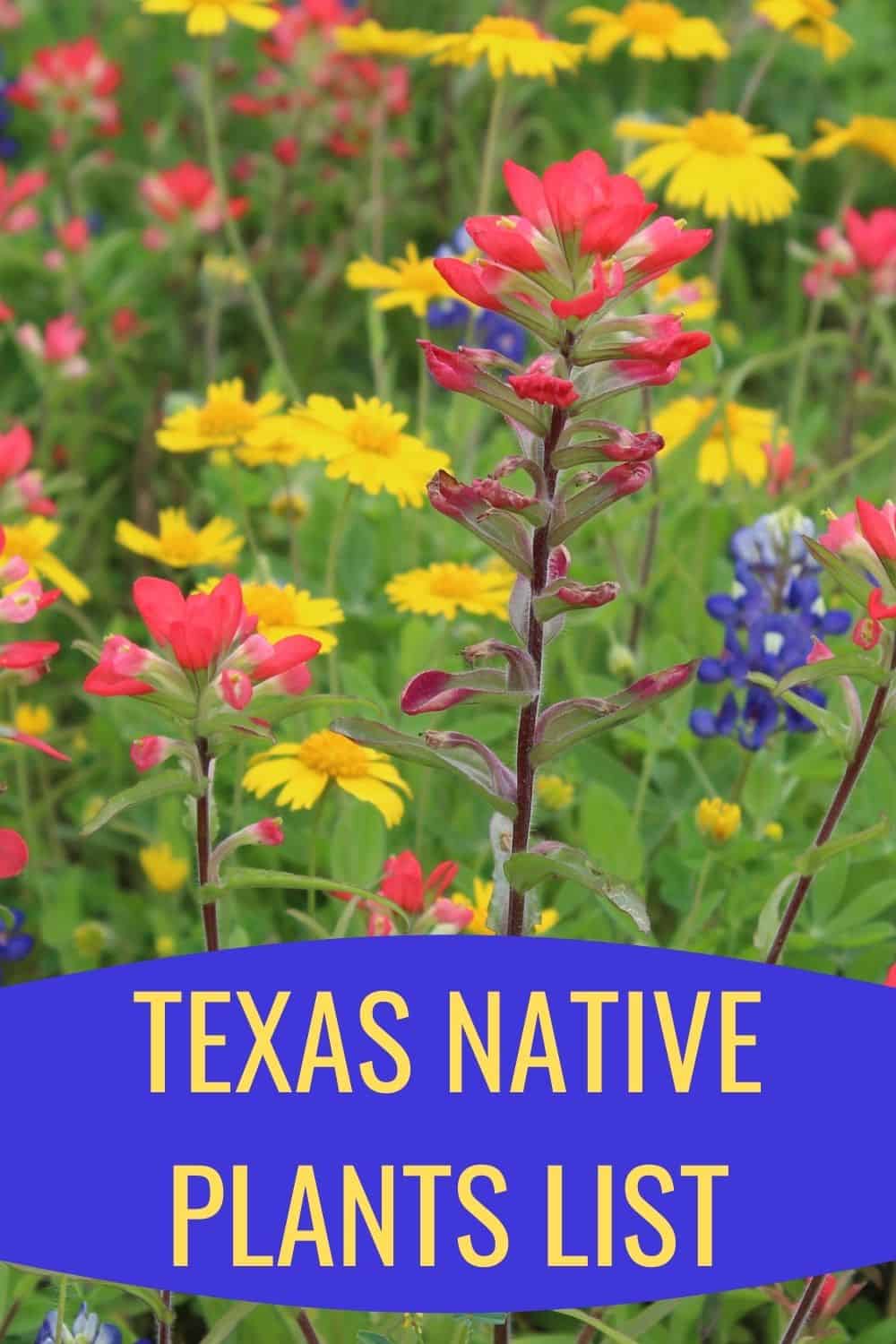They say everything’s bigger in Texas and we have a huge list of awesome native plants for you to consider. Some important things to know about Texas is that this large state has many different zones within it, and this means different climates and soil conditions and even different average temperatures.
It’s important to do your research about your particular area before buying and planting natives. Our list is meant to give you an idea of what is native to the Lonestar State but be aware it might not be best for your particular area. You can get started with this Texas native plants list.
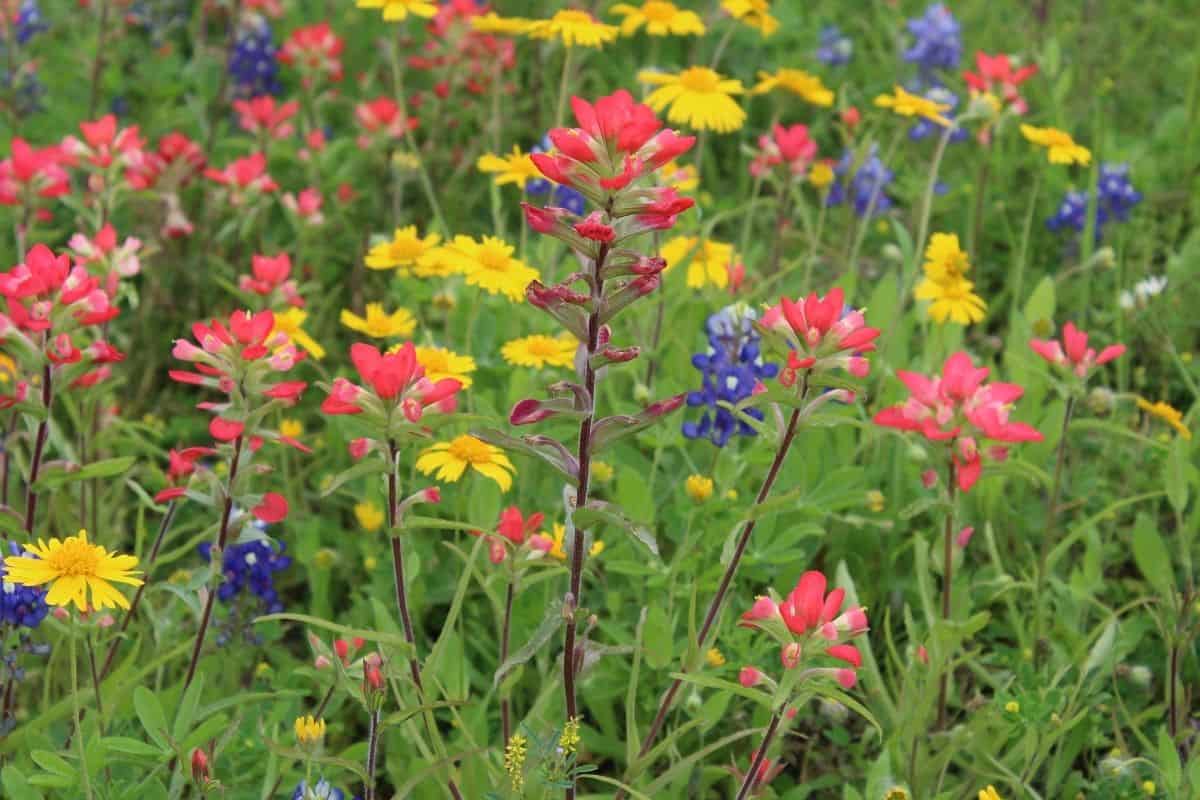
Texas Native Plants List
Here are some great native plants to consider from the Lonestar State:
1. Butterfly daisy (Amblyolepis setigera)
Butterfly daisies are also called honey daisies and they are part of the aster family. They have the classic small sunflower look of most asters, and the blooms are yellow with yellow centers.
They grow from 6-15 inches tall and have hairy branches on the upper stems where the flowers bloom. They bloom from March to June and are found natively in the Texas panhandle and through central and west Texas.
They like dry, well-drained soil and part shade. Too much direct sun can cause them to burn.
2. Hummingbird bush (Anisacanthus quadrifidus var. wrightii)
Hummingbird bush is known by many names such as flame acanthus, Mexican flame, Wright’s Mexican flame, and Wright’s desert honeysuckle. It is native from the west and south-central Texas and into northern Mexico.
The Mexican flame is a showy summer-to-fall blooming plant that blooms beautiful red and orange flowers from June to October. It likes dry to moist soil, full sun to part shade, and is both cold and heat tolerant. This means it can do well in the dry, desert-like climates of Texas.
3. Eastern red columbine (Aquilegia canadensis)
Eastern red columbine or wild red columbine, as it is sometimes called, is another popular native choice. It’s part of the buttercup family and grows up to 2 feet tall with unique, showy red and yellow drooping flowers at the tops of the tall stems.
It blooms from February to July and likes dry to moist alkaline soil and part shade to full shade. While it likes moisture, it needs to drain well, or the roots can rot.
It will attract butterflies, hummingbirds, bees, and hawk moths to your garden.
4. Spider milkweed (Asclepias asperula)
Spider milkweed is one of several milkweeds native to Texas. It is also known as antelope-horns, green-flowered milkweed, and spider antelope-horns.
It grows in clumps from 1-2 feet tall, usually upright but sometimes sprawling. It’s a great source of food for Monarch butterfly caterpillars and it is low maintenance.
It blooms from March to October and is white with green on the blooms. It likes dry to moist soil, usually rocky or sandy, and full sun.
5. Butterflyweed (Asclepias tuberosa)
Butterflyweed is also called butterfly milkweed, orange milkweed, chigger flower, and pleurisy root. It grows from 1 ½ to 2 feet tall and spreads bushy with bright orange flowers blooming at the top.
It is easily grown from seed in your home garden and is low maintenance once established. It blooms from May to September and will attract many butterflies (as the name suggests).
It likes dry, well-draining, sandy soils and full sun, and will do well in drought, making it perfect for certain parts of Texas.
6. Green comet milkweed (Asclepias viridiflora)
Here’s another milkweed on our list. It is also called green-flowered milkweed, green milkweed, and wand milkweed. It grows up to two feet tall and has leaves that are about four inches long.
20-80 pale green flowers grow in clusters at the tops of these stems. They bloom from June to September and they like dry soil and full sun without a lot of watering.
They can be somewhat toxic to humans and animals but are great for native bees like bumblebees and honey bees.
7. Orchid tree (Bauhinia lunarioides)
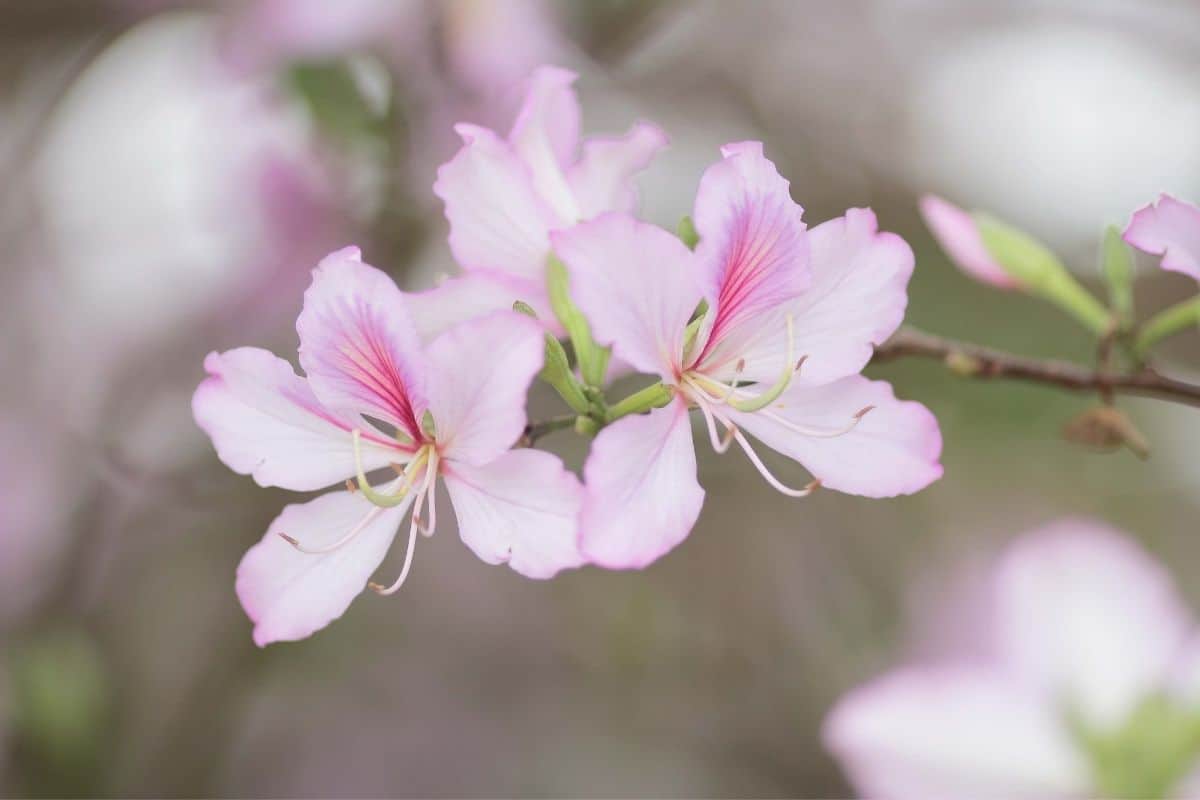
While it’s not a flower, the orchid tree is on the list because of the beautiful flowers that bloom on it. It’s also called Texas plume and Anachacho Bauhinia.
It’s native only to a few canyons in the western central Texas region so check if it works in your area. It grows from 6-12 feet tall and blooms delicate, white to pale pink flowers that look like orchids. It’s actually part of the pea family.
It typically blooms from March to May but may also bloom after heavy rain in the summer or fall.
8. Sundrops (Calylophus berlandieri ssp. pinifolius)
Sundrops are known by several names, including square-bud day-primrose and Berlandier’s sundrops. It is in the evening primrose family and grows up to 30 inches tall.
The yellow flowers bloom from April to June and it likes dry soil and part shade. It doesn’t require a lot of water and can do well in drought conditions.
Sundrops provide nectar for pollinators and is a great ornamental for gardens.
9. Texas Indian paintbrush (Castilleja indivisa)
Texas Indian paintbrush is also called scarlet paintbrush. This member of the figwort family has stunning red and yellow flowers that really pop in any garden or landscape.
It can grow from 6-16 inches high and the flowers bloom at the top of the spikes. Typically, it will grow until it reaches the roots of other plants nearby. It blooms from March to May and likes dry, acidic, sandy soils and full sun.
10. Winecup (Callirhoe involucrata)
Winecup is also known as purple poppy mallow. This attractive, spreading perennial grows about three feet tall and has chalice-shaped flowers that are about 1 ½- 2 ½ inches wide. They are purple or wine-colored with white spots at the base of the petals, giving the flower a white center.
They bloom from March to June and prefer a well-drained, rocky, or sandy soil that is dry to moist, and full sun to part shade. This is good for a bedding plant and provides nectar to native bees.
11. Standing winecup (Callirhoe pedata)
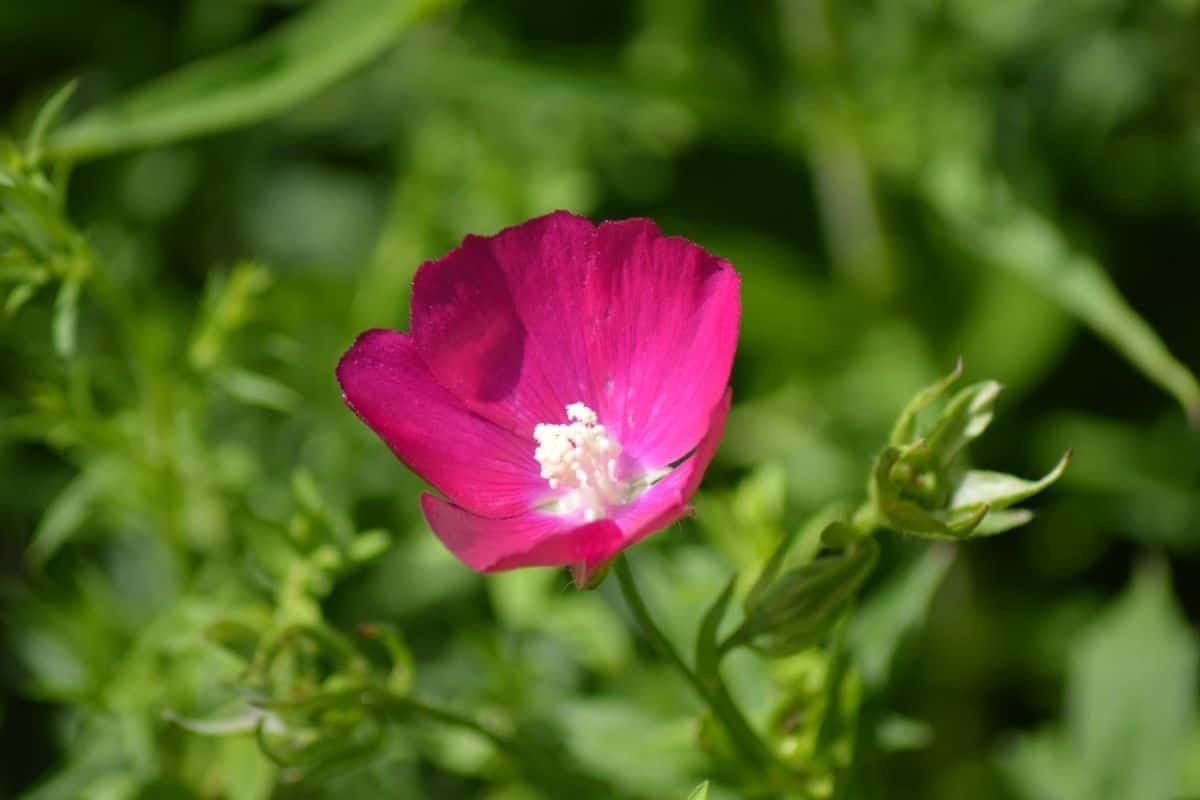
This variety of winecup is also known as palmleaf poppymallow and finger poppymallow. It’s also part of the mallow family and is very similar to the regular winecup. The main difference in appearance is that it does not have the white center. It likes dry to moist, well-draining soil and it has a shorter bloom period than the other variety. It does best in full sun to part shade.
12. Trumpet creeper (Campsis radicans)
Trumpet creeper is a vining plant also called trumpet vine, common trumpet creeper, cow vine, foxglove vine, and Devil’s shoestring. It’s a high-climbing wood vine that can grow up to 35 feet long. It can creep along the ground or grow up a fence, tree, trellis, or other surfaces.
Take note that it can easily become aggressive and may need to be managed. The showy red, orange, or yellow flowers are 3-4 inches long and bloom from June to September.
13. American basketflower (Centaurea americana)
American basketflower is a unique purple flower also called American star thistle, shaving brush, and just basket flower. It can grow from 1 ½ to 5 feet tall and the flower heads can be from 4-5 inches wide. It looks a lot like thistles in bloom, but it’s not prickly.
They bloom in May and June and can be different shades of purple and white. It likes dry to mesic, acidic soil, and full sun to part shade.
This plant has a sweet honey fragrance and also works well as a cut flower. It’s very easily cultivated in home gardens.
14. Texas redbud (Cercis canadensis var. texensis)
Texas redbud is a large shrub or small tree that can grow from 10-20 feet tall. It’s part of the pea family and has beautiful pink-to-purple buds that bloom in March and April.
In some cases, they can be white, but this is rarer. There are also some white-flowered cultivars.
The redbud is cold-tolerant, heat tolerant, and drought tolerant. It likes dry, alkaline soil and full sun to part shade. Once established, it’s pretty low maintenance.
15. Beeflower (Chamaecrista fasciculata var. fasciculata)
Beeflower is a cute little yellow flower that is also called partridge pea and is part of the pea family. It can grow from 2-4 feet tall and blooms from May to October.
Although it should be grown in full sun, it can tolerate some part shade.
It will attract bees and butterflies to your garden. The yellow flowers can have a red or maroon-colored center. GORGEOUS!
16. Desert willow (Chilopsis linearis)
Desert willow is also called flowering willow, willow-leaved Catalpa, mimbre, bow willow, and flor de mimbre. It grows from 15-40 feet tall and is a tree or small shrub that looks great in your garden or landscape.
It blooms dark pink to purple flowers, with white, yellow, or purple streaks in them. Although not a willow, it looks like them, which is where it gets its common name. It makes a popular ornamental tree and blooms heaviest from May to June but can bloom any time between April and September.
17. Damianita (Chrysactinia mexicana)
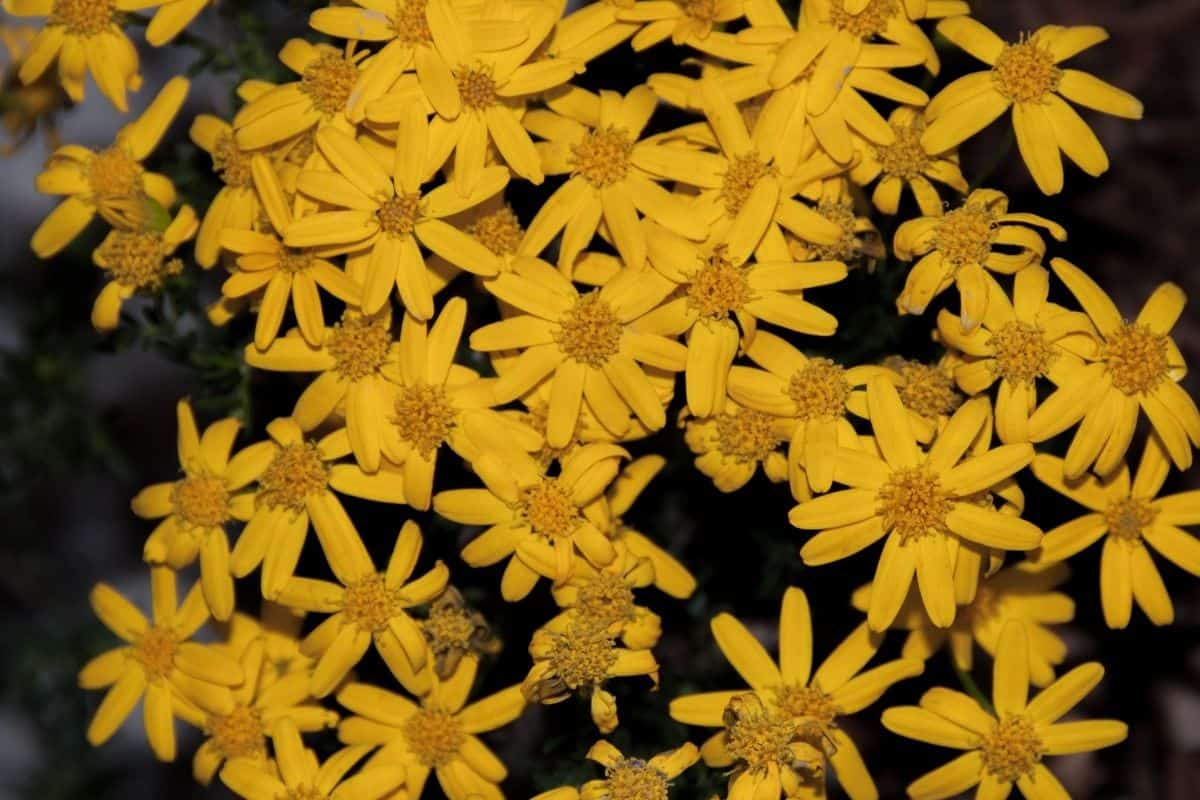
Diamianita is part of the aster family. It grows 1-2 feet tall and is bushy and aromatic. Yellow composite flowers grow at the tops of the bushy stems in a mound.
Although it is technically a shrub, it blooms to look like a flower and is typically used as such. It’s drought-tolerant and blooms from April to September. It likes dry soil and full sun.
18. Purple leatherflower (Clematis pitcheri)
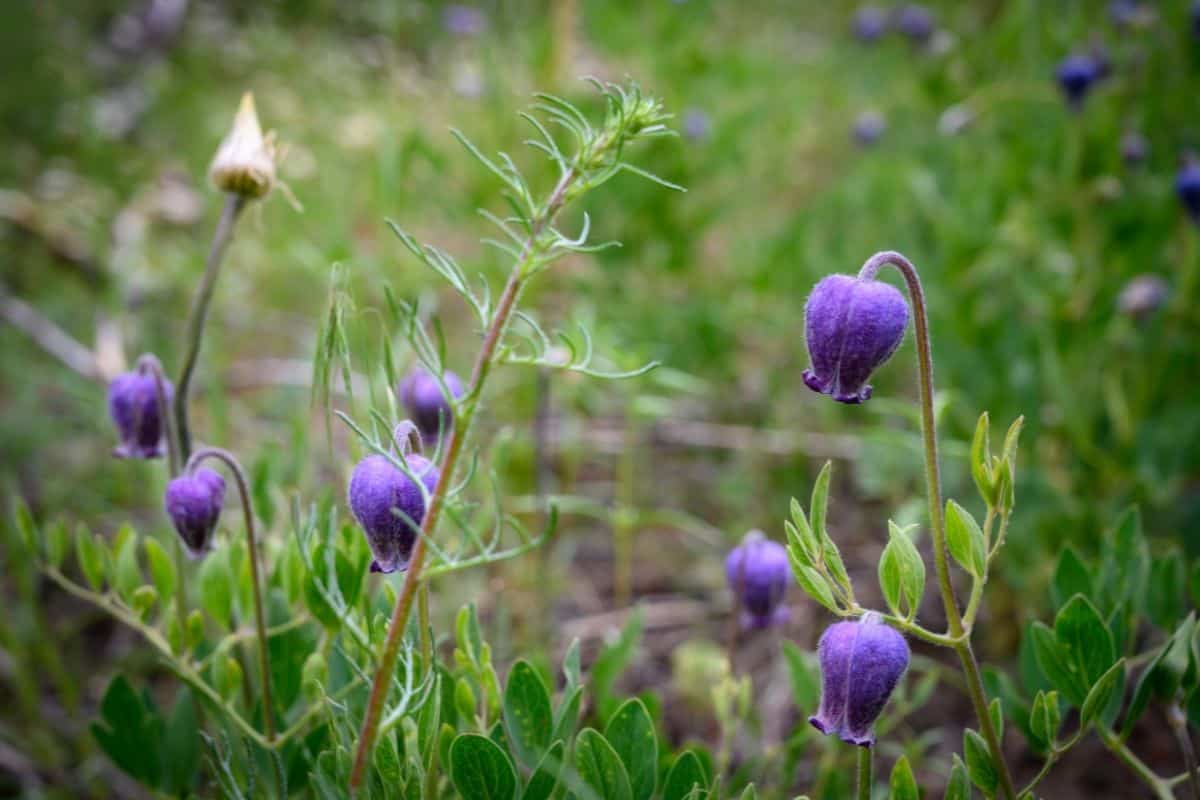
Purple leatherflower is a unique-looking flower in the buttercup family. It is also called purple clematis, bluebill, pitcher’s clematis, and bellflower clematis.
The purple flowers take the shape of a bell and drop down from the stem. It’s a climbing vine that can grow up to 10 feet and has long-lasting flowers. It typically blooms from May to September and likes moist, well-draining soils and full sun to part shade.
19. Golden tickseed (Coreopsis tinctoria var. tinctoria)
Last on our list, but definitely not least, is golden tickseed. This vibrant yellow and red flower is also known as golden-wave. It’s part of the aster family and blooms from February all the way to November.
The yellow-ray flowers make the garden pop and the brown to red-colored disk flowers make the center stand out. It likes moist soil and full sun to part shade and is low maintenance.
Texas has about 3,192 known native plants so this is just a small sampling. If you want to plant a native garden, do some research about the best natives in your area and conditions.
Now that you know about these plants, let’s take a look at some commonly asked questions.
Texas native plants list FAQ
Here are some frequently asked questions about Texas native plant life. If you don’t see your questions answered in our post, feel free to leave a comment below.
What trees are native to Texas?
Some Texas native trees include live oak, southern red, Shumard oak, Texas ash, black cherry, cedar elm, and American sycamore. There are many more, so look into what trees are native to your area.
What shrubs are native to Texas?
Texas has many native shrubs. We’ve already mentioned a couple of flowering ones on our list. Other native shrubs that are good for landscaping include Texas sage, Texas mountain laurel, Yaupon holly, cherry laurel, evergreen sumac, dwarf Yaupon holly, ash juniper, wax myrtle, agarita, sotol, and prickly pear.
How do I know which native plants to put in my garden?
Visiting a local nursery is one way to help learn which natives you should plant. You need to know about your own soil conditions, where and how the sun hits certain parts of your property, and also which natives do best in your local climate.
